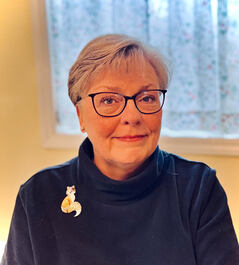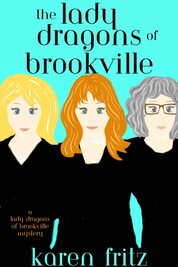|
Sarah: Somehow we both have written very similar characters, though different
plots, in our first procedural novel. Your book takes place in Laurel, Maine. It's a small town on the coast of Maine that is a tourist area (meaning summer residents), and a small steady population year round. LT Nichols never planned to join the police, and in fact was a bartender when it was suggested to him. My book takes place in Eden County, Florida. A rural county with a tiny year-round population in North Central Florida. Jim Sheppard didn't want to be a sheriff, and he was getting his masters in education so he could teach history, when his wife's death and having a baby son made him decide to drop out of college and go home to Eden County and become a deputy under his father who was Sheriff. In the first book they are both faced with crimes that test their ability to be law enforcement officers, and make both of them doubt their ability to solve the crime. But they are both determined to find out what happened and who did it and why, no matter what roadblocks get thrown in their path. How did you come to write about LT? And why do you think he became a good police chief? Albert: There are so many characters in crime fiction who have extraordinary capabilities, whether it’s incredible powers of deduction or a deep knowledge of psychology or ninja-like combat skills. But none of the police officers that I know and have known are like that. They’re real people who try to do their best in an extremely difficult job. To me, that’s much more dramatic and compelling than the adventures of fanciful quasi-superheroes. (Though I will admit to reading and loving all of Sherlock Holmes—over and over.) LT is a good person with good intentions, like many of us. The difference is that while he realizes his shortcomings, he will not let them get in the way of doing what’s right. He’s not afraid to do the hard things, even if they appear to be beyond his capabilities. The funny thing is that I don’t see The Ruins of Woodman’s Village as a police procedural (though I suppose that’s what it is). I see it as character-driven fiction where the protagonist happens to be a police chief. Maybe that approach is what keeps LT from being a cliché on the page. One thing that Sheriff Jim Shephard has that LT does not is a high level of education and a certain thoughtfulness. LT is a college dropout who was drifting before he joined Laurel’s police force. Jim Shephard was purposely headed in a different direction and yet wound up in the family business: being the Sheriff of Eden County. How does Jim’s educational background and intelligence play into how he approaches his job? Is it at odds with his family history? Sarah: I never thought about LT’s education. That is a difference. Jim Sheppard had a Bachelors and was half-way through his Masters program when his wife died in a car wreck. He’s more educated than most of his deputies, except for Dee Jackson, who is completing her Masters in Criminal Justice. That might be a reason that Jim and Dee connect really well. Jim’s father went to the University of Florida on a football scholarship, which is what he wanted his son to do. He also wanted him to major in Criminal Justice, and instead he majored in history. I don’t think that Jim thinks of himself as better educated, but more that he loves history. I don’t think he considers what education level his deputies have, as long as they are good at their job. He hires a lot of veterans, because he sees them as having experience that prepares them for dealing with violence. In BURNING EDEN, Jim does not feel qualified to solve a kidnapping or a possible serial killer. He is overwhelmed. He really relies on the experience of his deputies. He leans on Dee Jackson, with her Military Police experience, and his contacts in the Florida Department of Law Enforcement who do all the forensic work for Eden County. Jim’s education is at odds with everyone’s in his department, and with his family as well. However, history does educate a person a great deal about human beings. His education has caused him to hire diversely. He has deputies who know the people – all the people – and don’t react according to the prejudices that you’d encounter in a mostly white Sheriff’s department in rural Florida. Eden County is pretty rural. There are a few wealthy people, but the majority of the population is poor. In THE RUINS OF WOODMAN’S VILLAGE, because Laurel is a summer tourist community, there are HUGE differences in wealth that are visible. You continue to deal with this part of being the Police Chief in Laurel in FLOOD TIDE, the next book – where LT Nichols has to work with a very wealthy, politically connected family. LT definitely seems to have issues with the “summer” people who come into Laurel and change the atmosphere a great deal. Does that change how you approach the characters and the crime? Albert: The changing summer demographics and the accompanying dynamics of being in a seasonal tourist town pose additional challenges for LT Nichols. They complicate what is already a difficult job. As the town transforms from a small fishing village into a fast-paced resort every summer, a heightened energy envelopes Laurel. In the simplest analysis, the more people who occupy a space, the greater the chance for interactions that can take a bad turn. In addition, backgrounds and expectations can clash. It’s a lot for LT to handle. At the same time, however, he comes to realize that people, no matter what their socioeconomic status, all want the same things (love, comfort, respect, etc..,) and face the same demons (greed, selfishness, unchecked desire, etc..,). When all these things collide, life gets tough for LT Nichols. Maybe that explains his fondness for a cold Budweiser at the end of the day. Jim Shephard does not exactly have it easy in Eden County, Florida. In Burning Eden and Frozen Eden, the sequel, he faces a different set of challenges, and they come from environmental stressors. In the first book, it’s heat and wildfires. In the second, there are unheard-of wintry conditions and an ice storm. What choices did you make to place Jim and Eden County under these conditions? How do they work into the fabric of who Jim is and his role in the county? Sarah: Florida weather is a bit like “Florida Man,” unpredictable and extreme. The wildfires written about in BURNING EDEN really happened in 1998. There used to be orange trees in South Florida, but the freeze I write about in FROZEN EDEN pretty much destroyed the industry here. Yes, we have long periods of “typical” Florida weather. It includes daily afternoon rains, sunshine in the mornings, and clear skies at night. It’s hot in the mornings and early afternoons, then the rain cools it down for the evening. We have hurricanes and tornadoes. Four Corners, an unincorporated community west of Walt Disney World, has more lightning strikes than any other community in the USA. We rarely have freezes long enough or bad enough to ice roads. We have no salt, no sand, no way to distribute it on the roads if we had it. We still have homes that don’t have any heat! For Jim these conditions change everything. They literally threaten the lives of everyone in the county. They bring out Jim’s best qualities. His empathy and his ability to know how and where to use the strengths of his deputies. He’s a smart man, and it’s enjoyable to bring that out in the open. One of the things I really like about LT Nichols is there’s no artifice about him. He’s a local guy who ended up being the police chief. In both THE RUINS OF WOODMAN’S VILLAGE and FLOOD TIDE, LT has to deal with people who control their world and the people around them with finely developed public personas. From a big man who controls a community through fear to a man who controls his world through wealth and political power, LT never stops pushing for the truth. Even when everyone is telling him to let it go, he simply can’t. Why? Albert: It’s who he is. He is constantly trying to prove something, not to anyone else, but to himself. He’s always been small in stature and often underestimated. But he knows if he’s doing his best, he can live with himself. Although he was a good athlete, it wasn’t until he found wrestling in his youth that he fully applied himself to something. LT realizes that it was giving everything he had to wrestling that made him successful—a state champion. He knows that if he wants to do his job to the best of his abilities, he needs to apply that same single-mindedness to being the chief of police in Laurel, Maine. And while he is correct about that with regards to his work, his personal life can suffer collateral damage as a result. This is something that’s explored in THE RUINS OF WOODMAN’S VILLAGE and carries over into FLOOD TIDE. By being someone who refuses to let himself down professionally, LT steps out onto a tightrope of his own creation again and again. While LT Nichols is a bachelor, Sheriff Jim Shephard is a single father—of a son who wants to follow him into law enforcement. While Jim reluctantly stepped into his father’s role of Sherriff of Eden County, Jim is determined to keep his son, Michael, out of the family business. But in the upcoming FROZEN EDEN, Michael edges closer to an active role in an investigation. This intertwined family and professional dynamic is at the heart of who these characters are and where they are going. How does this weigh on Jim? How does it affect the decisions that he makes, both professionally and as a father at home? Sarah: I think Jim Sheppard feels that his son should have the choice he was denied in life. It’s not that working in the Eden County Sheriff’s Department is a bad choice, but it was a choice he feels he didn’t make. Michael Sheppard has grown up watching his father, and before that his grandfather, do a job that is about doing good in the community. He’s watched his father make changes – a more diverse group of deputies, better educated/trained deputies – and he admires it. While Jim sees being a deputy as limiting Michael’s life experiences, Michael sees it as challenging. Many of Jim’s deputies have greater life experiences – such as serving overseas in the military. Others are better at routine and knowing the people and Eden County’s geography. The variety of experience makes his department stronger, more capable. He can use deputies in different ways, capitalizing on their abilities and experiences. I think he fears that Michael would be “settling” for something familiar and never giving himself the opportunity to grow more as a man by being a part of the outside world. Jim did experience that by going to graduate school and his love of history. Being a father pulled him back into Eden County, which I don’t think he regrets, but that he does feel limited him in ways that he sees other people aren’t. Sarah Bewley has been a private investigator, a freelance writer, and is an award-winning playwright. Her love of mysteries inspired her to write her first book BURNING EDEN. She lives in North Florida with Pat Payne, a visual artist. She rock climbs, takes boxing lessons, and loves reading and dogs. Albert Waitt is the author of Flood Tide, The Ruins of Woodman’s Village, and Summer to Fall. Flood Tide, published by Level Best Books in March of 2024, is the second book of a series featuring Laurel, Maine, police chief, LT Nichols. Waitt’s short fiction has appeared in The Literary Review, Third Coast, The Beloit Fiction Journal, Words and Images, Stymie: A Journal of Sport and Literature, and other publications. Waitt is a graduate of Bates College and the Creative Writing Program at Boston University. Experiences ranging from tending bar, teaching creative writing, playing guitar for the Syphlloids, and frying clams can be found bleeding through his work.
0 Comments
The Lady Dragons of Brookville features Trixie, Kathleen, and Martha, three middle-aged women from different backgrounds and life experiences, join forces to protect their community. If I were to bump into them on the street, which one would eye me suspiciously?
Lynn, I guess my first question is what exactly are you doing? If you were suspicious, Trixie would totally give you the stink eye and probably ask you some very probing questions. Which one would apologize and then faint? Oh, no doubt, Kathleen. She is the epitome of a real Southern genteel lady. And which one would karate-chop me? Definitely, Martha. Martha, has a take no prisoners attitude and she is a rule girl. If you’re breaking the rules, Martha will be there to get you back on track. It’s sometimes said that there’s always a little piece of a character they create in the author. So, which one of the Lady Dragons do you relate to the most? Not Kathleen. Sadly, my salty language would give Miss Kathleen the vapers. I think there’s a bit of a Trixie and Martha mashup. Trixie’s directness and Martha’s weird fascination with forensics are pieces of my personality. How far did you stray from the original concept to the published book? Overall, I kept the original concept which was a mashup of the Golden Girls and Rizzoli and Isles. However, initially, there was going to be four women. The fourth one was a meeting planner. But, in the end four is a crowd. Without giving away anything, is there a particular scene in the book you struggled with? The opening scene of the first chapter stresses me out. There’s just so much riding on it. One you’re rather proud of? There’s actually two chapters that I was pleased with. The first when Doc and Trixie are at Emile’s restaurant and the second chapter is the well chapter. One that made you laugh out loud? The ladies investigating Camille’s house. Honestly, that chapter tickles me every time I read it. LOVE it! What type of music does Trixie listen to? She likes rock music when she runs, especially Guns and Roses. But Trixie also likes 80’s music. Duh, because everyone knows 80’s music was the best! Kathleen? She enjoys jazz music and the old crooners such as Dean Martin, Frank Sinatra. Martha? Film soundtracks fascinate Martha. She is fascinated by the process of how the music is created to fit specific characters and situations within a film. Describe Trixie, Kathleen, and Martha each with the first word that comes to your mind. One word only. Don’t cheat. Trixie - loyal Kathleen - a pleaser Martha - pragmatic Now, describe Karen in one word. Determined. Your favorite color? Turquoise Beach or mountains? Beach but not the sand. Ice cream or brownie? Brownie. However, vanilla ice cream with the brownie is acceptable. I’m not big on fruit ice cream but I do line peanut butter chocolate ice cream. Steak or lasagna? Both. My favorite steak is filet cooked medium. And lasagna, always homemade. What are you currently working on? Book 2 of the Lady Dragons. In book two, the ladies have formed LDB Investigations. Their first case is trying to solve the murder of a friend. Early in their investigation, they receive threats which puzzles Trixie, frightens Kathleen and delights Martha. The quaint town of Brookville was just what Trixie Tanner needed for a fresh start. The condominium brochure promised, “Your vacation destination for everyday living,” and so far, it was true. She loved her new condo, the charming town, and her new life. But during Trixie’s early morning run, all that changed. A piercing scream shattered the morning tranquility and the illusion. When the body of a young woman is discovered murdered on the condominium trail, Brookville’s idyllic façade starts to crumble. Despite warnings from law enforcement and the formidable medical examiner, Trixie and her new friends Martha, a quirky CSI-wannabe, and Kathleen, a prim and proper retired schoolteacher: the Lady Dragons of Brookville join forces to find the killer and become the voice for the dead. Karen Fritz lives in North Carolina with her husband, two daughters, one maniacal Doberman and a bougie cat. Lynn Chandler Willis is an award-winning author, a Shamus Award finalist, and the first woman in a decade to win the PWA Best 1st PI Novel competition. Her latest book with Level Best is What the Monkey Saw. She lives in a little house on the farm in the heart of North Carolina with her shelter dog, Finn, a happy border collie, and a hand-me-down kitty named Jingles. |
Level Best AuthorsMusings from our Amazing Group of Authors Archives
July 2024
Categories
All
|
Level Best Books18100 Windsor Hill Rd
Olney MD 20832 |







 RSS Feed
RSS Feed